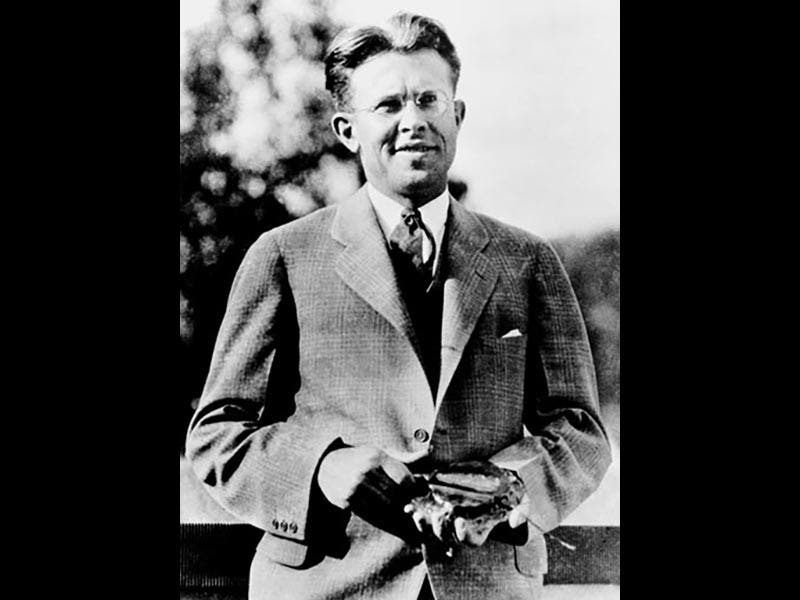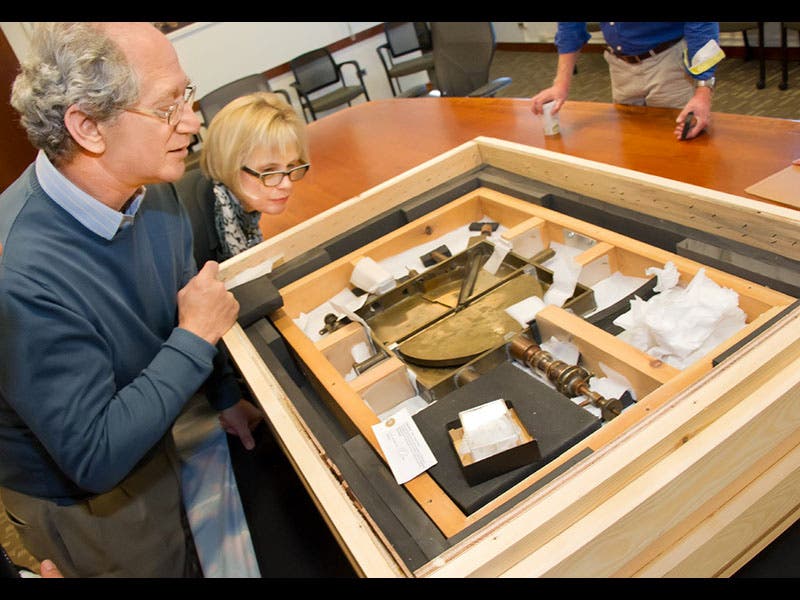Scientist of the Day - Ernest O. Lawrence
Ernest Orlando Lawrence, an American physicist, was born Aug. 8, 1901. Lawrence took a position at the University of California in 1928, and he soon began looking for a way to accelerate atomic particles such as protons to high speeds, so that they could be used to bombard other atoms. By 1930 (with the considerable help of M. Stanley Livingston), he had developed what he called a "cyclotron". The first one was a little round electromagnet sandwich, rather like a Whopper, only instead of a meat patty, there were two small hollow brass semi-circular containers inside, called “Dees”, because of their shape. The particles were injected into a hole in the center of the Dees, and then the electric current was alternated so that each particle moved in a tight spiral between the magnets, going faster and faster as it moved outward. By the time it reached the edge, each particle had a potential of about 80,000 volts and was moving at a small fraction of the speed of light.
The first cyclotron was 4 ½ inches across, so it is sometimes referred to as the 4” cyclotron, sometimes as the 5”, but it is all the same instrument. In the images above we see Lawrence holding the 4” cyclotron (first image), a modern photo of the device (second image), and a diagram showing its construction (third image). You can even view an animation to see how it works.
Lawrence immediately began building bigger cyclotrons. By 1932, he had an 11” instrument up and running (when this cyclotron was later superseded, Lawrence donated it to the Science Museum, London; it was eventually returned to Berkeley in 2013, and we see above a photo of it being unpacked, which provides a good sense of scale, fourth image). A 37” was operational by 1937, and a 60” by 1939. Our fifth photo shows Lawrence leaning over the 37” cyclotron, and the sixth gives a good idea of the size of the magnets needed to curve the protons in the 37” cyclotron, with Livingston and Lawrence providing the scale here.
Lawrence really inaugurated the era of "Big Science", where a researcher supervises hundreds of workers (and spends millions of dollars!). Lawrence received the Nobel Prize in Physics in 1939 for his cyclotron work (the first person at a public university to receive the award), and during the Second World War, he used his methods of Gargantuan Science to separate the isotope U235 (the fissionable isotope) from ordinary uranium on a mammoth scale at Oak Ridge, Tennessee, for the Manhattan Project.
Dr. William B. Ashworth, Jr., Consultant for the History of Science, Linda Hall Library and Associate Professor, Department of History, University of Missouri-Kansas City. Comments or corrections are welcome; please direct to ashworthw@umkc.edu.












